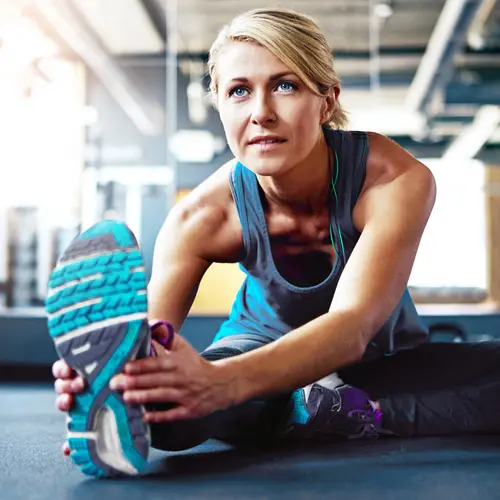No matter your age, to keep your breasts healthy it helps to learn what's normal and what's not. It will put you on the lookout for changes that could be signs of trouble.
Just like any part of your body, find out what to expect at different stages of life.
"Knowing what your breasts look and feel like can help you recognize when something is suddenly different," says Pamela Peeke, MD, author of Body for Life for Women. "The same way you pay attention to your skin and watch for new moles, you should pay attention to your breasts."
Your doctor may give you a breast exam at your annual visit, and may teach you how to do a self-exam at home. Research doesn't show that breast exams save lives or detect cancers earlier, but many doctors still recommend them. And it's always a good idea to be aware of your body and let your doctor know if you notice any changes.
What's Normal, What's Not
You may sometimes worry that your breasts don't look "right." But most of the things women are concerned about are not actually that unusual, Peeke says. For example, it's completely normal if:
- Your breasts are slightly different sizes.
- One breast hangs slightly lower than the other.
- You have hair around your nipples.
- Your breasts hurt or feel tender before and during your period.
Tell your doctor if you see any unusual changes, though. For example, make an appointment if you notice:
- A firm lump you've never felt before
- Swelling around your breast, collarbone, or armpit
- Dry, cracked, red, or thickened skin (like an orange peel) around your nipple
- Blood or fluid (besides milk) leaking from your nipples
- Warmth or itching in your breasts
These symptoms don't always mean something's wrong, but it's important to get checked out by a doctor. They may be harmless changes, or they may be caused by an irritation or infection that can be easily treated. Rarely, they can be signs of cancer.
You may need to see a doctor if your nipple looks like it's pulling back into the breast. But only if it's a change in your appearance, says Erin Hofstatter, MD, assistant professor of medical oncology at Yale School of Medicine. "Roughly 10% of women have naturally inverted nipples," she says. It's not a problem if it's something you've had all along.
Know Your Risk for Breast Cancer
Talk to your doctor about things that may put you at higher risk for the disease. For instance, your chances of getting it may go up if you smoke, drink alcohol, or have a family history of breast cancer.
Women who don't have children, or who have them after age 30, also have a higher risk. So do women who have their first period before age 12, go through menopause later than normal, or take certain hormone drugs during menopause for longer than 5 years.
If you take birth control pills, it could slightly raise your breast cancer risk. Together with your doctor, you should consider all of the things that may raise your odds of getting the disease before you decide what kind of birth control to use.
Changes When You're Pregnant or Breastfeeding
When you get pregnant, it's normal for your breasts to get larger and more tender, for your nipples to darken and blood vessels to become more visible, and for your breast tissue to get lumpier.
Cysts (fluid-filled sacs) and other non-cancerous tumors can form or get larger during pregnancy. "The vast majority of lumps discovered by pregnant women are not cancer," Peeke says. "But you can't rule it out for sure, so you should still mention them to your doctor."
Your breasts will likely swell and fill with milk a few days after you give birth. This can make them feel hard and tender. Breastfeeding can ease this feeling. If you opt to bottle-feed instead, your breasts should stop making milk after a few days.
If you are breastfeeding, you may get sore, cracked nipples or plugged milk ducts. It can lead to a painful infection called mastitis, which needs get treated with antibiotics.
Breast Health in Your 40s and Up
You'll notice physical changes as you get older. During menopause or the run-up to it, the glands that make milk shrink. They're replaced with new fat tissue, so your bra-cup size may go up. Your breasts may also begin to sag more.
Your risk for breast cancer goes up as you get older, so talk to your doctor about when you should start getting screening tests called mammograms. Major health groups recommend them every 1 to 2 years for women 50 to 74, but some suggest you start at age 40 or 45.
Healthy Habits at Any Age
No matter your age, you can lower your risk of breast cancer if you limit alcohol to one drink a day or less, quit smoking if you've got the habit, and stay at a healthy weight. It's also important to get at least 150 minutes of moderate exercise a week and eat plenty of fruits and veggies.
It's never too early to start thinking about how to have healthy breasts for life -- or too late to make changes for the better.

